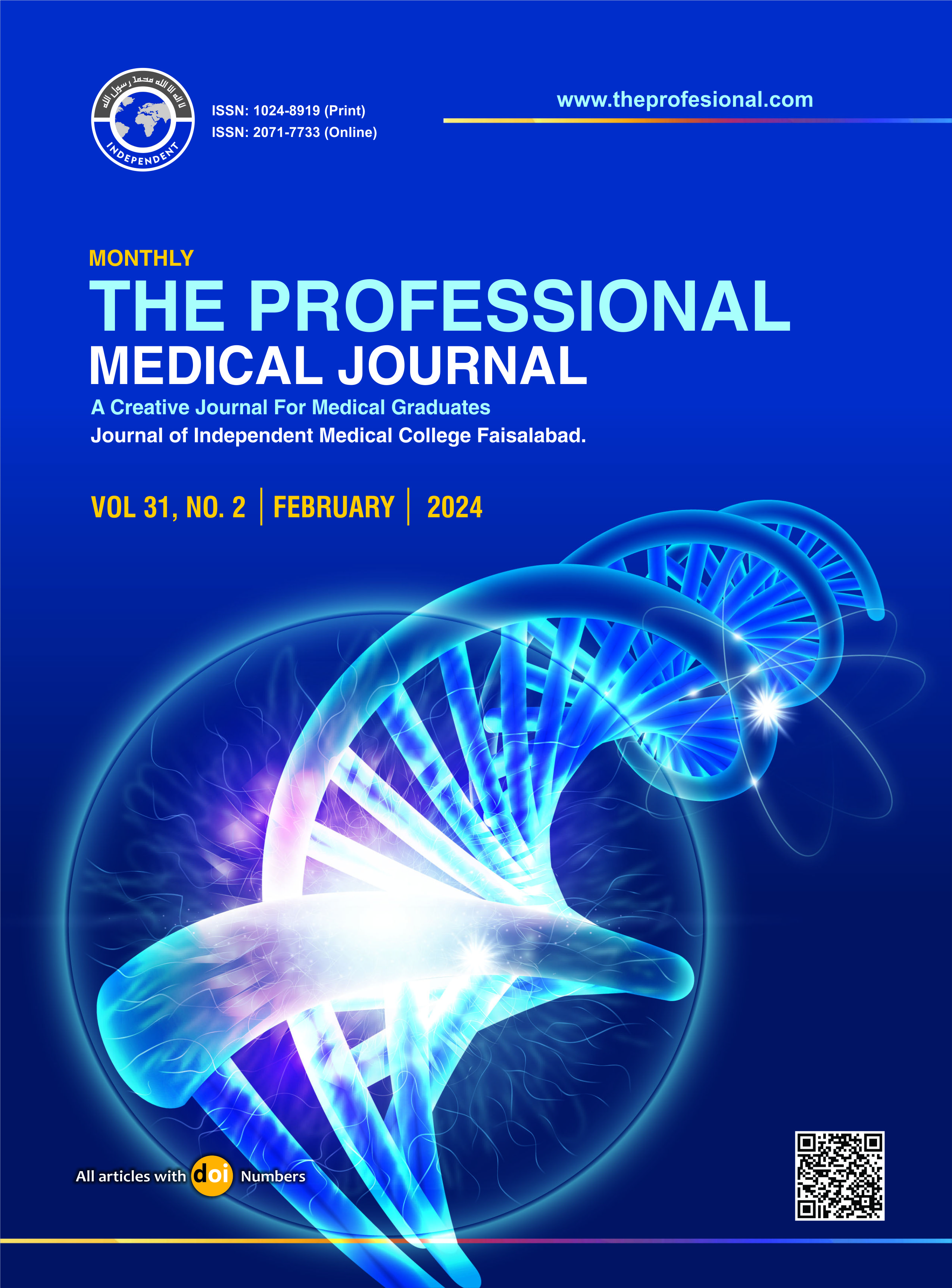Outcome of continuous renal replacement therapy in critically ill children.
DOI:
https://doi.org/10.29309/TPMJ/2024.31.02.7961Keywords:
Acute Kidney Injury (AKI), Acute Renal Failure (ARF), Continuous Renal Replacement Therapy (CRRT), Critically Ill Children, Pediatric Intensive Care Unit (PICU)Abstract
Objective: To determine the outcome of critically ill children undergoing CRRT. Study Design: Prospective Observational Study. Setting: Pediatric Intensive Care Unit at Aga Khan University Hospital. Period: Jan 2021 to Dec 2022. Material & Methods: The study comprised of collection of data of critically ill children from the age 1-18 years who were subjected to CRRT from Jan 2021 to December 2022. We reported primary diagnosis, demographics, indications, modality, and outcomes of CRRT. Statistical analyses were utilized to relate risk factors correlating with mortality among patients who underwent CRRT. Our main outcome measures were mortality among critically ill pediatric patients who were subjected to CRRT and its associated risk factors. Results: 42 patients underwent CRRT from Jan 2021 to December 2022. Mean age was 11.97 ± 4.3 years, with 64% male population. Most common primary diagnosis was infectious etiology (36%) followed by genitourinary system (27%). 83% patients were in failure according to pRIFLE criteria. 81% patients had multiorgan dysfunction (MODS) with renal, cardiovascular, and respiratory dysfunction sequentially being most common. The mean ionotropic score before & after CRRT was 38.57 & 49.71 respectively. Mean ICU duration of admission was 11.6 days. The most common indication for CRRT was fluid overload (85.71%). Median length of CRRT was 62 hours with a mean circuit life of 47.87 hours. Most common CRRT catheter site was the femoral vein (83%) followed by the internal jugular vein (14%). CVVHDF was the most used modality (64%) followed by CVVH (19%). We report an overall mortality of 71.4%, with a positive correlation with use of norepinephrine post CRRT, presence of multiorgan dysfunction, presence of cardiovascular dysfunction, respiratory dysfunction, and low platelet count (<150,000 per microliter) on univariate analysis. Only respiratory dysfunction was statistically significantly associated with mortality on multivariate analysis. Conclusion: The gross mortality in patients who underwent CRRT was high (71.4%). Norepinephrine use post-CRRT, multi-organ dysfunction, cardiovascular system, respiratory system dysfunction and low platelet counts were associated with high mortality while association of respiratory dysfunction with mortality was independently statistically significant.
Downloads
Published
Issue
Section
License
Copyright (c) 2024 The Professional Medical Journal

This work is licensed under a Creative Commons Attribution-NonCommercial 4.0 International License.


